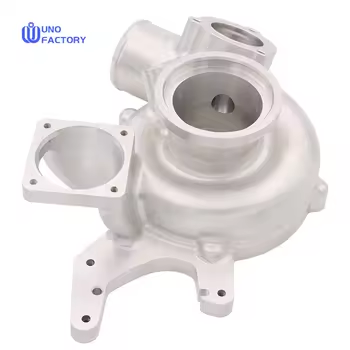Time to read: 6 min

Before a product hits the market, the prototype development phase is crucial. It not only determines whether the product is fit for production and function but also reduces costs at an early stage. This article delves into the various stages of prototype development and their importance, helping you understand this complex yet critical process.
Prototype development is an indispensable part of the manufacturing process, involving multiple stages, each of which is vital to the success of the final product. A prototype is more than just a simple model; it's a physical entity that showcases the product's features and functions, allowing manufacturers to conduct necessary tests and adjustments before fully committing to production.
Categories of Prototypes
Prototypes can be classified into the following categories based on design requirements and expected functionality:
- Functional Prototype: This type of prototype replicates as many of the final product's features and functions as possible for comprehensive testing.
- Visual Prototype: This prototype focuses on the product's external design, including shape, size, and layout, and may not necessarily include functionality.
- User Experience Prototype: This prototype is designed to showcase product details for further user research and feedback.
- Proof of Concept Prototype: This prototype is used to test the basic functionality and design concept of the product, often made with low-cost materials.
Importance of Prototype Development
The prototype development phase is invaluable to manufacturers for the following reasons:
- Product Pitching: There's no point in creating a part or product that clients or stakeholders won't support. A prototype can convince clients or stakeholders more effectively than selling without one, as they can touch and feel the prototype and provide feedback.
- Concept Validation: Drawing out the design for a part does not guarantee that it will fulfill its intended functions under real-life conditions. A prototype is an excellent way to evaluate how the part will perform when subjected to its working environment.
- Minimizing Production Costs: While it may seem counterintuitive since the prototype will also consume some of the capital meant for product production, the amount used in the prototype production will be insignificant compared to the amount stakeholders will have to waste if the trial and error method is used.
Differences Between Prototypes and Final Products
Although manufacturers and product developers try to minimize the differences between prototypes and final products, there are some distinctions. For instance, prototypes may be made from cheaper materials, while final products use more expensive materials. Additionally, the quantity of final products and prototypes made is always different, with prototypes typically produced in low volumes for the production process.
Phases of Prototype Development
The prototype development process generally includes the following stages:
- Alpha Phase: In this phase of prototype manufacturing, prototypes are developed to answer questions about the product's appearance and functionality.
- Beta Phase: Building on client feedback and stakeholders from the Alpha phase, more sophisticated prototypes are made. These products are closer to the final product in terms of appearance and functionality.
- Pilot Phase: This is the final prototype phase where the machinists make the final/pilot prototype. It is the first product that looks exactly like other part units will, provided there are no further issues.
Common Prototype Development Mistakes
Newcomers to the industry often have misconceptions about the prototype development phase, leading to problems with the final product. Examples of such mistakes include:
- Not seeking expert advice on how to progress through each phase of prototype development.
- Failing to make accurate cost estimates.
- Not obtaining enough user feedback, which is crucial for the success of the process.
- Trying to fit the prototype development process into a fixed timeframe. The length of this process depends on the complexity of the part.
Conclusion
Prototype development is a process that requires a lot of planning and careful deliberation. While you can choose to do this yourself, seeking expert help can make the work easier and save time.
Unofactory Rapid Prototyping Services
Need a company to handle your prototype development process? Look no further because Unofactory has all the technical expertise you'll ever need. With over two decades of manufacturing experience, we have experienced staff who can make expert revisions to your design to ensure your product's success.
Unofactory understands that you want excellent service and you don't want to spend much to get it; therefore, we offer precisely that. With us, you will get the exceptional service you crave at a highly competitive price. Our service is affordable, and we don't compromise quality at any phase of the process.
Once you assign your project to us, we make insightful reviews of the project based on neutral user feedback. We also listen to whatever instructions or revisions you'd like us to make. We obey your orders while guiding you along the right path every step of the way.
FAQs
How long does the prototype development process take?
This largely depends on the type of product. It can range from six months to a couple of years to go from the concept stage to commercial production.
How much does it cost to prototype a part?
The cost of prototypes varies depending on the prototyping phase and the complexity of the product. For example, the appearance prototype could range from $500 to $1500.




